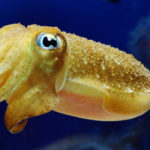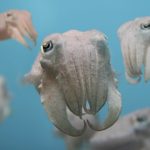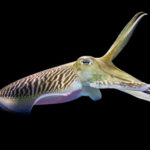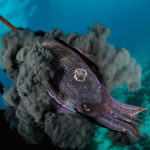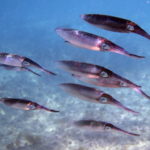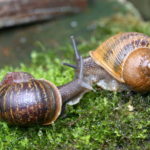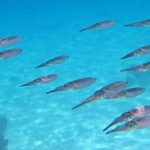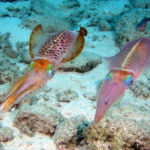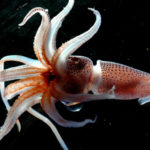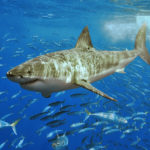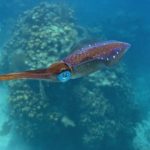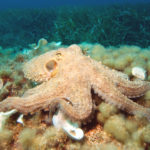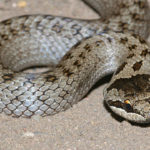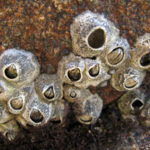Cuttlefish
 Cuttlefish in the minds of most people are associated with something formless and ugly, and all because many do not even know what they look like. In fact, these animals can safely be called attractive. Cuttlefish are cephalopods and are related to octopuses and squid. In the world there are about 100 of their species, allotted to the eponymous detachment.
Cuttlefish in the minds of most people are associated with something formless and ugly, and all because many do not even know what they look like. In fact, these animals can safely be called attractive. Cuttlefish are cephalopods and are related to octopuses and squid. In the world there are about 100 of their species, allotted to the eponymous detachment.
In the structure of cuttlefish, there are many common features with other cephalopods. Just like the octopus, their body is formed by a skin-muscular sac – a mantle. But, in contrast to the brethren, the cuttlefish have an elongated-oval shape, slightly flattened, but unchanged (octopuses, as you know, easily squeeze into narrow slits). Their head is closely fused with the trunk, large eyes are prominent on it. They have a complex structure and a slit-shaped pupil.
On the front of the head there is a peculiar beak, with cuttlefish crushing food. But to see it under normal conditions is impossible, since it is hidden between the tentacles. In total, cuttlefish have eight tentacles-hands and two special hunting tentacles, all of which are littered with suckers. The hands of these animals in a calm state are folded together and stretched forward, which gives their body streamlining. Tentacle tentacles are hidden in special pockets under the eyes, they “shoot” from there only at the time of the attack.
Cuttlefish have fins on the sides of the body, elongated in the form of a rim. They are the main means of transportation. The pushing of water from the siphon, as octopuses do, is also practiced by these animals, but serves only as an additional method of acceleration.
A unique feature of cuttlefish is the inner shell, which replaces the skeleton. The shell is more like not a shell, but a plate with internal cavities. It is located inside the body on the dorsal side and protects the internal organs, and cavities reduce weight and give buoyancy. Other internal organs are arranged in cuttlefish as well as in other cephalopods. They also have an ink bag that produces a record-high quantity of ink among cephalopods. Externally, males and females look the same, but in males one of the tentacles takes on a special shape and is used for fertilization.
Among the cephalopods, they are distinguished by a relatively small size. The largest species – wide-sepia sepia – reaches a length of 1.5 m (with hands) and weighs up to 10 kg. But most species are much more modest, their length reaches 20 cm. Several small species do not exceed a length of 1.8-2 cm! These are the smallest cephalopods in the world.
